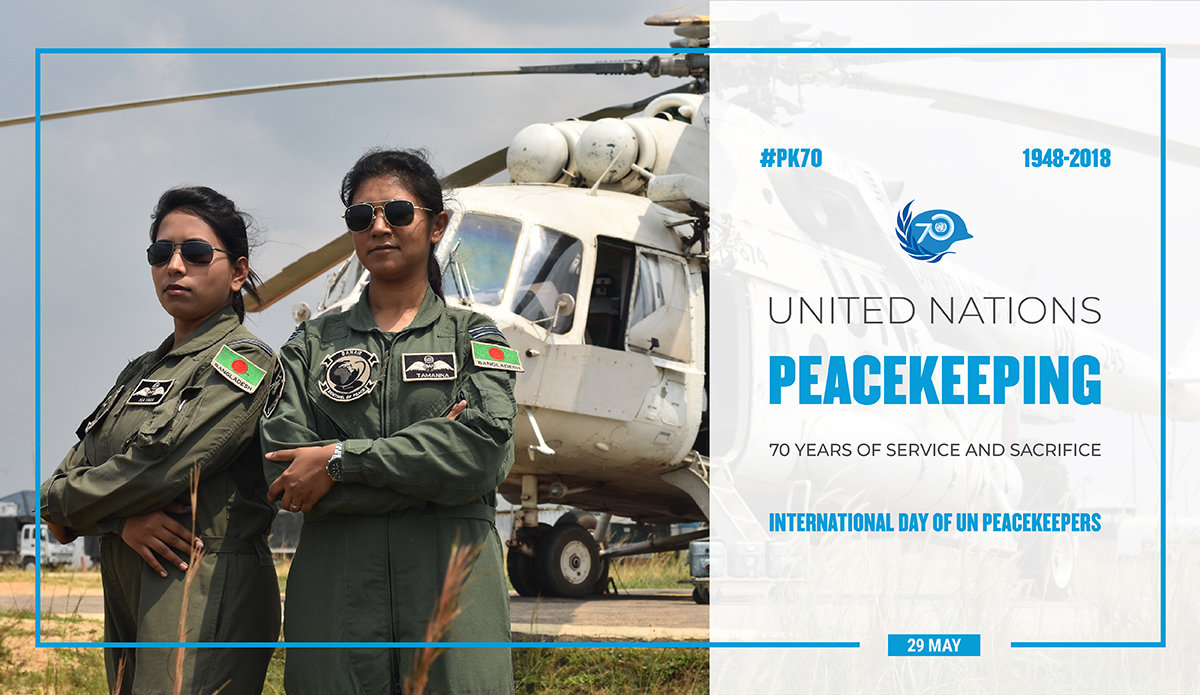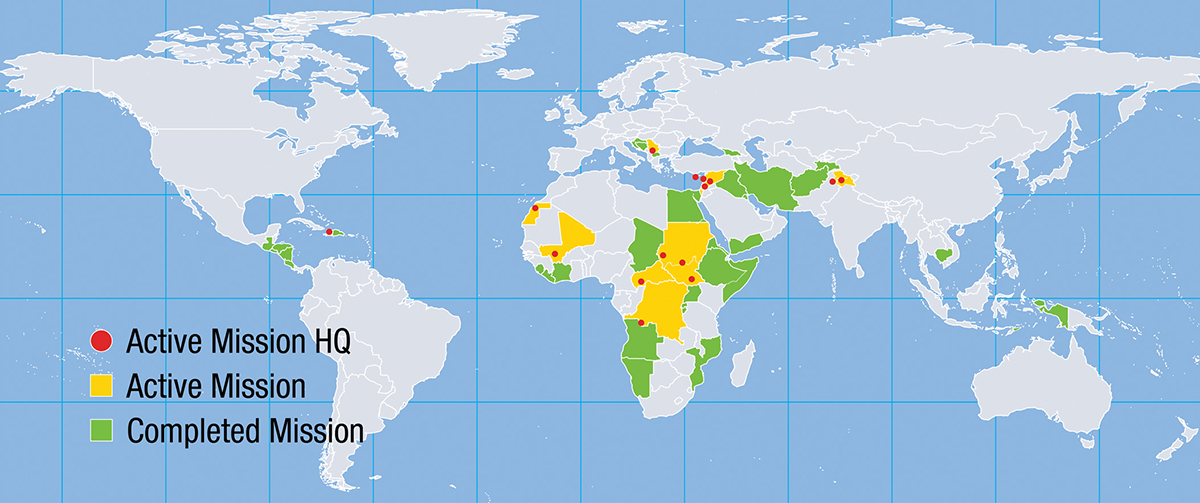The first UN peacekeeping mission was established in May 1948, when the UN Security Council authorized the deployment of a small number of UN military observers to the Middle East to form the United Nations Truce Supervision Organization (UNTSO) to monitor the Armistice Agreement between Israel and its Arab neighbours.
Over the past 70 years, more than 1 million men and women have served under the UN flag in more than 70 UN peacekeeping operations. More than 100,000 military, police and civilian personnel from 125 countries currently serve in 14 peacekeeping operations.
360VR Film - Under the Blue Helmet: Life As A UN Peacekeeper
UN Peacekeepers have long been the best chance for peace for some of the world’s most vulnerable people. Their service and sacrifice – frequently under harsh and dangerous conditions– has made the Blue Helmet a symbol of hope to millions of people.
In the early years, UN Peacekeeping’s goals were primarily limited to maintaining ceasefires and stabilizing situations on the ground so that efforts could be made at the political level to resolve the conflict by peaceful means. Those missions consisted of military observers and lightly armed troops with monitoring, reporting and confidence-building roles in support of ceasefires and limited peace agreements. Troops and police came from a relatively small number of countries and they were almost exclusively men.
This map shows 70 years of peacekeeping operations spanning across four continents.
Over the years, UN Peacekeeping has adapted to meet the demands of different conflicts and a changing political landscape. Today's multidimensional peacekeeping operations are called upon not only to maintain peace and security but also to facilitate the political processes, protect civilians, disarm combatants, support elections, protect and promote human rights and restore the rule of law.
While most peacekeepers are serving military or police, 14 per cent are civilians who perform a wide range of functions, from serving as the civilian leadership of the mission to working in the areas of political and civil affairs, human rights, elections, strategic communications, IT, logistics, transport and administration and more.
Women peacekeepers today play an increasingly prominent role and are crucial towards improving the performance of our missions. They serve as police officers, troops, pilots, military observers, and other uniformed and civilian posts, including in command positions.
70 Years of UN Peacekeeping: A collection of photos
With its expanded role and operations in some of the world’s most challenging environments, peacekeepers face considerable risks. Since 1948, more than 3,500 personnel have lost their lives serving in UN peace operations, including 943 killed by violence. Since 2013, casualties have spiked, with 195 deaths in violent attacks, more than during any other five-year period in the UN’s history.



